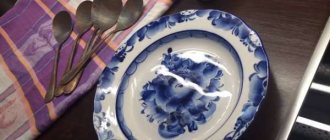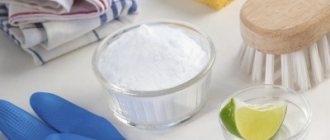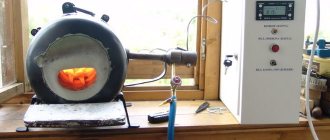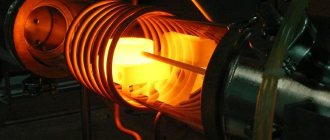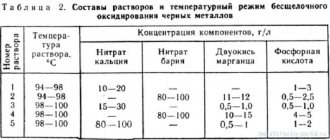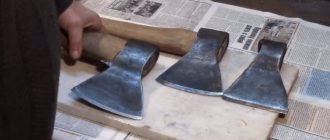Copper belongs to the category of materials that undergo corrosion when exposed to aggressive environments. As a result, material deterioration occurs, gradual destruction and loss of normal performance qualities.
In many ways, the features of the process and its dynamics may differ depending on the environment, temperature conditions and other characteristics.
Let's consider in what environments the material begins to deteriorate most quickly and how to further protect it from the rusting process.
Features of different types of aggressive environments
The type of damage and the rate of corrosion of copper directly depend on the atmosphere in which it is located. Even the highest quality materials cannot withstand strong aggressive influences for a long time.
Next, we describe the main types of media and their effect on the material.
Water
Copper parts can be used in a variety of aquatic environments. The composition of the liquid, the speed of its movement and other important characteristics change.
The main parameter influencing the intensity of the process is the presence of an oxide film that has already formed on the surface of the material.
There are several parameters that influence the process in an aquatic environment:
- Flow intensity . Corrosion of copper in water increases when the flow moves at high speed. In this case, the rusting process will be called impact.
- Degree of aeration . The more oxygen in water, the higher the rate of impact corrosion. This is especially true for water with low hardness and a significant degree of chlorine content.
- Climatic zone . Typically, in warm and humid areas, the speed of the process becomes much faster.
- Composition of water . As with other types of metals, seawater poses the greatest danger to copper. There is a significant risk of developing electrochemical corrosion of copper upon contact of several types of metal products located close to each other. But there is also an advantage - biological rusting is excluded, because harmful marine microorganisms do not survive on copper surfaces. When used in clean water, the danger is much less, which is why copper pipes are often used for installing heating and water supply systems in the private sector.
Sometimes destruction can be stimulated by unexpected catalysts. One of them is the passage of water through severely worn out utility networks. If there is a large amount of iron in the water, there is a high risk of starting an electrochemical process.
It is also worth paying attention to what materials are located next to copper products in conditions of high humidity.
Among the most dangerous are aluminum and zinc.
A universal solution to the problem of using pipes in utility networks is the use of tinned copper in the process of their manufacture. In this case, the inside of the pipe is coated with tin.
The cost of production becomes higher, but the process pays for itself by increasing the duration of use without replacement.
Atmospheric exposure
This type of material is one of the most durable on the market when it comes to outdoor applications.
The main property of the material in this case is the possibility of the gradual appearance of an oxide film (patina). It is the patina that becomes a natural protective coating that limits the contact of this type of raw material with many types of potential oxidizing agents.
In this way, an effect similar to galvanizing is achieved, but without the use of additional impurities and compounds.
Due to its tendency to patina, copper can be freely used outdoors. This is often used by architects when they need to provide roofing, create small architectural forms and solve other issues as part of a comprehensive landscaping.
The rate at which patina appears may vary depending on the climate zone, average temperatures and other features.
The likelihood of negative effects of the atmosphere increases if there are a lot of foreign impurities in the air. Corrosion begins to develop especially often in places where there are a lot of chlorides and sulfides dispersed in the air.
The soil
When answering the question of whether copper can rust when the product is placed in soil, it is important to take into account the main parameter of the soil - pH or the degree of alkalinity.
The higher it is, the greater the acidity. Since acids negatively affect the condition of copper and trigger the corrosion process, it is better not to use the material in highly alkaline soils.
Another potential danger factor is a high concentration of soil microorganisms.
The problem is that during their life they emit hydrogen sulfide.
This is another substance that negatively affects both copper itself and its numerous alloys.
Usually, upon contact with negative soil factors, corrosion products begin to accumulate on the surface of the material. They layer on top of each other, the film can become loose and heterogeneous.
Therefore, if a noble patina appears on the material in the atmosphere, then in the soil the structure is very different. Most often these are large layered hard growths.
An interesting feature of copper is that even if it has spent many years in the ground, most of the oxidation products can be removed by mechanical or chemical methods.
Search data for your request:
Many people have copper products at home. These can be kitchen utensils, antique coins, buttons, interior items and even jewelry. Unfortunately, one of the properties of copper is oxidation upon contact with certain substances, and it can also darken over time.
How to clean copper products at home and restore their original shine and beauty? Sometimes, copper products are specially patinated to give the effect of antiquity; in other cases, this is a consequence of unintentional oxidation.
Cleaning copper products at home is possible using both special and folk remedies.
Search data for your request:
Schemes, reference books, datasheets: Discussions, articles, manuals:
Wait for the search to complete in all databases. Upon completion, a link will appear to access the found materials.
WATCH THE VIDEO ON THE TOPIC: Galileo. Experiment. Copper cleaning
Composition for protection against oxidation during heating of copper and ee alloys
Copper jewelry is valued not only for its beauty, but also is believed to have health benefits. But unlike more expensive gold items, copper jewelry requires little care to avoid oxidation.
When oxidized, copper rings and bracelets not only become coated, they also leave unsightly green stains on the skin. This happens when copper reacts with air and water to form copper carbonate.
Copper oxidation, although unsightly, is not harmful to health, but can be avoided with proper cleaning and daily care. Today, several methods are known to protect metal from rust.
Regardless of the chosen method of protection, the protection only applies. We advise you to take the drawing that you want to translate and make a reverse drawing from it through the glass.
Then coat the metal surface with an aqueous solution. In addition to the chemical etching of metals described above, there is another method of etching using a galvanic battery.
Advantages of the method Iron products to be polished are immersed for some time in a mixture consisting of 1 part sulfuric acid to 20 parts by volume of water, then the object is removed. In addition to the galvanic method, you can use the following, very simple method for coating polished steel or iron with a thin, but very durable etching is a method of reproducing designs, ornaments, inscriptions, etc. using chemical means.
I think many people have encountered the problem of hardening metal products, or rather, on the contrary, the lack of it.
For example, today it is difficult to find a good one. That beautiful malachite or bluish-green coloring that ancient bronze products possess occurred under the influence of very long exposure. Under the influence of oxygen, a beautiful black-brown layer is formed on the surface of the copper.
To speed up this process, they resort to artificial oxidation. Multi-colored mordants and dyes for brass products. Small brass items such as buttons, clasps, buckles, etc.
Welding machines Repair Cars and motorcycles Counters Security and protection Do-it-yourself crafts Brick production Paints, varnishes and inks Cosmetics and perfumes Working with wood Precious metals Ideas for business Homemade machines Working with metal Putty, grease and glue Schemes and drawings Energy Home mini-factories.
Use the site search:. For the home handyman Putty, grease and glue Paints, varnishes and inks Working with metal Working with wood Repair Mini-production Brick production Methanol production Weaving chain-link mesh Home mini-factories Homemade products Metal detectors Security and protection Welding machines Other homemade products Drag.
Auto and motorcycle Ideas for business Schemes and drawings Household meters Homemade machines. Alternative energy Auto and motorcycle Woodworking Metal detectors Drag. How to protect copper products from plaque formation. Clean your brass thoroughly with an acidic cleaner and, if necessary, a toothbrush.
There are many suitable cleaning products available in stores, but lemon juice, vinegar and even ketchup also contain enough acid for basic cleaning, and salt can be used as an abrasive to scrub away the most stubborn stains. Rinse the copper piece to remove any cleaning agent, then neutralize any remaining acid. Dip the item in a mixture of 1 part baking soda and 16 parts water. Rinse the jewelry again with clean water and dry.
Lubricate all surfaces of the product with xylon or denatured alcohol. Wait until it is completely dry. Cover the copper piece with a thin layer of wax and polish until shiny.
Jewelry wax can be purchased at a jewelry store, but car wax is also great. Before going to bed, be sure to remove all copper jewelry and dry it with a soft, clean cloth to remove sweat and oil.
After these daily treatments, your copper jewelry will require less cleaning and polishing to maintain its best appearance.
Can tinned copper rust?
It was noted above that one of the means of combating corrosion of copper pipes is the use of the tinning process - applying a layer of tin to the inner surface. But it is important to understand that this is not a panacea for a metal product.
The tin coating itself becomes the anode. This means that in relation to copper it has a more negative potential.
The main condition for protection against rust is that there are no cracks or other defects on the tin layer. If they do appear, corrosion of copper in air proceeds much faster.
Video description
How to clean copper: a simple and cheap way.
Soda solution
Copper items can be cleaned with a baking soda solution. The mixture is prepared by combining 5 tablespoons of water with 2 tablespoons of soda, and apply the prepared slurry to copper products. Cleaning takes place in a container in which the items are completely immersed. The duration of the process depends on the degree of contamination and can reach two weeks. The impact of the brush will speed up the cleaning of the copper surface. After completing the procedure, things are washed with water and dried.
In which environments can and cannot be used copper?
With proper processing, the material will last more than 100 years without corrosion. But it is important to understand where copper will be resistant to corrosion catalysts, and where there is a high risk of its occurrence.
It is safest to use the material outdoors and in fresh water, regardless of the degree of cooling or heating. In sea water, the material also remains undamaged for a long time and retains its performance characteristics.
You also don’t have to worry about the safety of the copper part if there are no strong oxidizing agents in the environment.
Danger can potentially arise if there is a lot of hydrogen sulfide in the soil, water or air, carbonic acid, salts of heavy metals, and amines.
When water is highly aerated, there is also a significant risk of impact corrosion and other types of gradual deterioration.
Therefore, when purchasing such material, it is very important to understand where you will use the copper product, and what external threats will affect it during operation.
Corrosive properties
Since the material is not a chemically active element, copper corrosion practically does not occur when interacting with air, fresh and sea water.
In dry air, a thin oxide film is formed, the thickness of which is about 50 nm. In fresh water, the corrosion rate of metal is 0.05–0.25 mm/year. However, when the liquid contains ammonia, hydrogen sulfide, chlorides and some other impurities, the intensity of the corrosion process increases.
In sea water, copper corrosion is insignificant, and its intensity is comparable to the destruction in fresh water. However, as the speed of the medium increases, impact corrosion occurs, which leads to an increase in the speed of the process. Copper corrosion depends significantly on temperature, and as the latter increases, the rate of destruction increases.
Copper is the only material that is not susceptible to algae fouling, since its ions have a detrimental effect on them. In soil saturated with microorganisms, the rate of corrosion processes increases noticeably. The intensity of their occurrence directly depends on the pH of the soil. The greater the deviation of the indicator value from neutral, the faster the metal corrosion occurs. The influence of microorganisms on the destruction process is determined by the release of hydrogen sulfide as a result of their vital activity.
The products of soil corrosion of an element differ from atmospheric corrosion and have a more complex composition and structure.
When copper objects are left in the soil for a very long time, they turn into a loose mass of light green color; when copper objects remain in the soil for a short period of time, they become covered with a slight layer of patina, which is easily removed during cleaning.
Corrosion of copper coated with a layer of tin (tinned) is practically absent. With high-quality tinning, it serves well under the influence of hail and snow, and becomes insensitive to temperature changes. The service life of such materials is about 100 years. In this case, the original properties are not lost. Over time, the color does not change, but remains the original - silver-metallic. Tinned copper has shown itself to be an excellent roofing material. It’s not for nothing that the domes of many churches are covered with this material.
About the importance of cleaning
To extend the life of your product, it should be cleaned regularly.
Gradually, most types of household appliances and other materials may lose their presentation and become dull due to the formation of an oxide film.
This is a beautiful means for aging dishes or other types of products, but many people do not like the presence of patina.
There are several common cleaning methods that can help remove the patina and leave the underlying material undamaged:
- Special solutions for washing dishes . In this case, the surface becomes more susceptible to the removal of the oxide film. If it has appeared recently, it will be possible to remove the oxidation products without making any serious efforts.
- Lemon acid . It can be used both as part of a solution and by simply applying a freshly cut slice to the surface. Patina is removed quickly and effectively.
- Vinegar . Has the same effect as lemon. To improve the effect, it is often mixed with salt or flour.
And this is only part of the methods that can be used to combat patina.
Video description
A simple and effective way to clean copper.
After acid treatment, the metal is dried and coated with a protective material. A two-component acrylic varnish used by motorists is excellent as a protective layer. The colorless liquid is used in a ratio of 3:1 or 2:1 with the solvent, depending on the type. Adding 10-15% thinner will ensure good application on the metal. The disadvantage of this treatment is the high cost of the varnish. A “slow” hardener will increase the drying speed of the protective coating.
One-component acrylic varnishes are not very durable. For interior work, a combined nitro varnish is used. Has proven itself well. The use of varnish on artificial resins is unacceptable when working with this metal, since the processing results in the production of green salt. The varnish coating will last longer if at least three layers are applied to the surface. Each application is accompanied by drying of the previous layer for one day.
How to protect copper from corrosion
There are many products that can help reduce the likelihood of corrosion in various environments. Among them are:
- Changing the composition of the material . The use of alloying can significantly increase the level of corrosion resistance. In this case, the impurities may be different - the main thing is to take into account the area of use of the finished part and understand the potential risks in order to eliminate them.
- Tinning . The process involves treatment with liquid tin. An effective protective layer is created on the surface. Provided there are no defects, it will limit contact with the atmosphere and other factors leading to corrosion.
- Control over the area of use . When purchasing copper products, it is important to understand where you will be using them. It is necessary to protect the material from contact with sulfur and its compounds, and to prevent zinc or aluminum parts from being located nearby. They can provoke the appearance of electrochemical corrosion.
Taking into account the standard requirements for the use of copper products will significantly increase their service life and prevent problems with corrosion.
Return to articles Share article
Folk remedies
Products found in any home can be used to restore copper products to their original appearance.
Cleaning copper with ammonia
Chalk chips and a colorless liquid with a pungent odor will help give copper utensils and jewelry their former shine. Chalk polishes and removes dirt. After cleaning, it is enough to remove the remaining emulsion from the surface.
Vaseline oil
The substance is suitable for cleaning small items. To do this, heat the Vaseline oil on the stove, bring to a boil and leave on low heat. For example, a copper coin is dipped into a boiling liquid and boiled. Under the influence of high temperatures, the oxide film, rust and discoloration will dissolve. Ethyl alcohol will help remove residual oil from the product.
